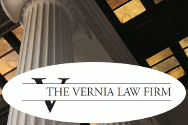by Ben Vernia | March 3rd, 2011
On March 1, the U.S. Supreme Court heard oral argument in U.S. ex rel. Kirk v. Schindler Elev. Corp., on certiorari from the Second Circuit, which held in April of 2010 that documents produced in response to Freedom of Information Act requests do not trigger the public disclosure bar of the False Claims Act (31 U.S.C. 3730(e)(4)) unless the documents themselves are “Congressional, administrative, or Government Accounting Office report, hearing, audit, or investigation.”
Comment: Trying to predict the outcome of a Supreme Court case on the basis of an argument is a fool’s errand, but it’s one that’s hard to resist. Rather than try to guess the outcome, here’s what the argument suggests how each Justice is leaning (apart from Thomas, who of course did not say a word, and Justice Kagan, who has recused herself from the case):
Roberts: The Chief Justice’s questions suggest that he is skeptical that FOIA productions are outside of the scope of the public disclosure bar, because the government agency producing them must undertake some evaluation (i.e., for responsiveness, privilege, etc.). The Second Circuit’s decision rests essentially on the premise that to the extent a FOIA production is a “report” of a government agency, it is a kind of meta-report, and that only the underlying documents which comprise it should be evaluated under the public disclosure bar. Roberts’ questions appear to reject that distinction.
Scalia: Scalia’s approach appears to be based on the K.I.S.S. (Keep It Simple, Stupid) principle. He critically questioned the relator’s attorney for the complexity of his definition of report, and at one point lamented:
I don’t — I don’t want to have to play these games every time there’s — there’s — there’s one of these qui tam actions. I mean, the advantage of Petitioner’s solution is that it — it’s easy — it’s easy to apply.
At another point, Justice Scalia uncharacteristically appealed to the statute’s purpose instead of its text: “Let’s talk about the purpose of the statute. Surely, that should upon how you read the — what you read the words to mean.”
Kennedy: Justice Kennedy seemed dubious of the defendant’s argument that any production constituted a governmental report (asking whether even an automated digital production would meet that definition), but he seemed equally skeptical of the Second Circuit’s reasoning, asking why fulfilling FOIA itself was not a governmental end sufficient to qualify a production under the statute as a report.
Ginsburg: Justice Ginsburg seemed comfortable with the Second Circuit’s meta-report analysis, critically questioning the company’s lawyer about the possible need of relators to obtain government documents to confirm a fraudulent scheme, and suggesting that third-party submissions to the government do not become reports of the U.S. itself.
Very early in the company’s initial argument, Justice Ginsburg made the most interesting comment of the argument, a possible dig at her silent colleague’s difficulties for failing to report his wife’s income from a Tea Party-aligned organization:
If I — if I submitted, as we — all Federal judges do, financial disclosure statements to an administrative office, and then someone from the press has a Freedom of Information Act request to see that financial disclosure statement, does it become — does it become the report of the administrative office, rather than my report to the administrative office?
(Perhaps Justice Ginsburg is contemplating a whistleblower suit against Justice Thomas.)
Breyer: Justice Breyer said little, only expressing confusion to the Assistant to the Solicitor General about the government’s position in favor of the relator.
Alito: If Justice Robert’s doesn’t get the Second Circuit’s meta-report analysis, Justice Scalia takes that confusion up a notch, asking why agencies’ annual FOIA reports to Congress wouldn’t constitute a governmental report. (These would be meta-meta-reports, I suppose, in the Second Circuit’s approach.) Reading between the lines, perhaps Justice Alito’s question was intended to demonstrate that in fact there are actual reports generated under FOIA, so there is no basis for singling out the FOIA production as immune from public disclosure treatment.
Sotomayor: Justice Sotomayor seemed quite skeptical of the defendant’s position, asking how it was logical and consistent with the purposes of the False Claims Act.
Based on this, it seems the Chief Justice and Justices Scalia and Alito are likely votes for the defendant, while Justices Ginsburg, Sotomayor and Kagan will probably vote for the relator. That leaves Justices Thomas and Breyer as the swing votes, and unlike many types of cases (e.g., separation of powers, individual liberties), I would not necessarily predict that Justice Thomas will follow the conservative bloc. Although the Court may not wish to leave this issue hanging, with Justice Kagan recused, there seems a decent chance that it will split 4-4.
Of course, as I noted when the Court granted certiorari in the case, within a few years the amendments to the public disclosure bar will moot the issue.

